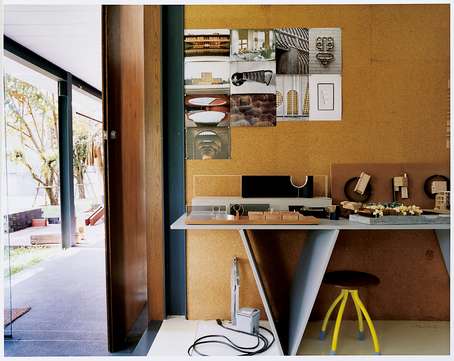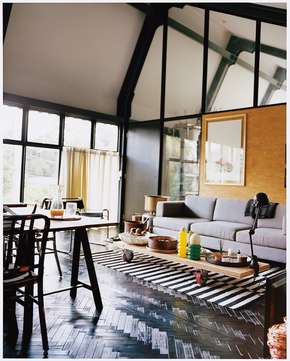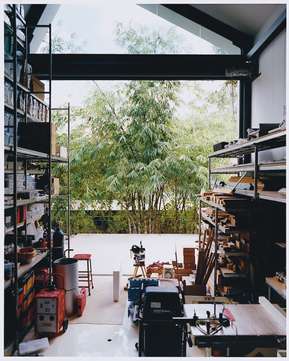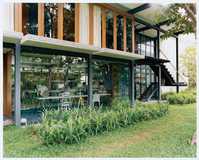Baan Sai Ma / Bangkok
Keeping it local
When relocating from the US to Thailand, the couple behind design practice Studiomake decided to take the best ideas from the nation’s provincial architecture to use for their own home-cum-studio.
As architecture students at the University of Arizona, David and Im Schafer learnt that the desert can be conquered by a building. But in the tropics, they discovered, you can’t fight the weather. The year-round heat, moisture and humidity in Thailand – where the couple relocated to start their award-winning design practice Studiomake – means buildings are in a constant battle with nature. “Moisture will delaminate everything you have, termites will devour anything soft, the sun will bleach any kind of colour, the winds will tear up your roof and rain will leak into your house,” says Im, who was born in Kansas to Thai parents but moved back to Bangkok aged seven, where she lived until she left for the US again as an undergraduate.
Undeterred by the foreboding conditions, the couple were fixed on creating a base that provided spaces to live and work on a plot 30 minutes from Bangkok, inherited from Im’s grandmother. They wanted somewhere that would blend with the environment and maximise insulation and ventilation without relying entirely on air-conditioning. For that, they had to travel back in time.








“Thailand’s older architecture is surprisingly forward looking,” says David, leafing through a Thai design book that shows wooden structures on stilts with peaked roofs that allow the hot air to rise. Originally from San Diego, David says that when they arrived in Thailand, Im took him to the provinces to study simple houses built for rural life. “These buildings were designed for families who worked downstairs in the cool in the day and retreated upstairs at night.”
While the single elongated steel-and-glass box that the couple have created is anything but traditional, Baan Sai Ma borrows from some of the same ideals. The workspace downstairs blends into a breezy living space upstairs that is partly open to the elements through a wall of bi-folding glass doors. The pitched roof is high and lined with vents to create a vacuum for hot air to escape while rooms are created using removable panels. “We wanted a changeable space,” says Im. “If our family grows then rooms can be added and if the studio expands the walls can be removed to create one big workshop.”
As we speak, the soft buzz of an electric saw downstairs is punctuated by the sounds of their daughter Sa in a room next door, proving this is a building with several functions. But if David and Im concede that falling in love at architecture school means work and home have never had much separation, there’s a distinct sense of order to the clever building that encourages a subtle divide.
Downstairs is the studio and a double-height workshop used to build prototypes, fulfilling a concept central to Studiomake: that design ideas should always be put the test. Upstairs a design library-cum-sitting room links the studio to the heart of the family’s home.
“We liked the idea of clients coming in here for a meeting and not being sure if they were in a living room or an extension of the studio,” says David.
The structure of the building is important, of course, but upon closer inspection the detail really stands out. “We joke that we’re proud that our buildings are quite boring from far away,” says David. “The closer you get, the more interesting we want it to be.” In the master bathroom, pea-green tiles add colour and texture to the otherwise soft teak interior. The landing is made from cream-coloured terrazzo: a granite, quartz and cement mix that is perfect for a warm climate says David, who chose it for its durability. Even the couple’s collectables betray an obsession with functional materials. In the library a copper pot from India sits on a silver base that is actually the drum of a washing machine.
As we finish speaking the heavy sky outside breaks and spots of rain start rolling down the windows. With the doors pulled shut and the air-conditioning on the change of temperature is imperceptible but the view across the green grass to the damp trees is magnificent. Neither David nor Im – who seems more American than Thai – have adapted to the climate in the years living here. But in their self-built home-work habitat, they have found a way to enjoy it.


